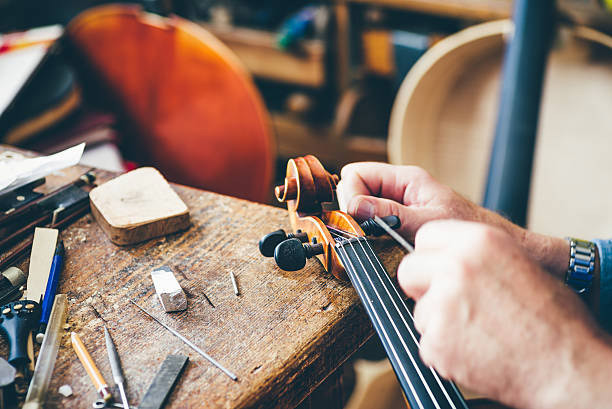The types of violin strings and the characteristics of the sound
Release time:
2022/09/26
The sound produced by a violin depends in part on the type of string used, and different kinds of strings can significantly

The sound produced by a violin depends in part on the type of string used, and different kinds of strings can significantly adjust the timbre properties of a violin. Ordinary AND WOUND gut, steel and SYNTHETIC STRINGS offer varying timbres from soft to bright, with varying degrees of stability and ease of playing. Due to the different timbre characteristics of violin strings, violinists of different music genres will have different preferences for the material of violin strings they use.

The earliest strings were made of catgut, another name for dried sheep or cow intestines. "Plain Gut" strings are still preferred in Baroque era music, providing rich and lively bright timbre in overtones. They do not stay tuned easily and break down earlier than their counterparts. Gut is usually the most expensive type of string.
Metal windings were first used in the 16th century to avoid the fluffiness of loose, low-pitched gut strings, and their width made them harder to strum or load into string axleboxes. Copper or silver wire makes the thinner gut wire heavier and therefore lower in pitch. Different winding materials can affect the sound of the strings. The wound gut string is thought to be more difficult to keep in tune because of the different responses to heat and moisture between the windings and core. Invented in the 1970s and more common today, wound strings with synthetic cores allow for a thinner width while maintaining the desired pitch, making the strings easier to play. Perlon is a stranded nylon that retains the timbre qualities of the gut while lasting longer, remaining tuned and less responsive to weather.
Country violinists prefer the sound of a steel core, whether solid metal or woven or twisted filaments. Steel strings have a bright, clear sound, less rich timbre, and are much cheaper. Gold plating or aluminum plating can delay the corrosion of crude steel E string.
keywords
Service Tel
Address
north of Xinghai Road, west of Sushang Road, Suning County, Cangzhou, Hebei,China
Hebei New Kaiming Violin Co., Ltd. Powered by 300.cn SEO Tag





